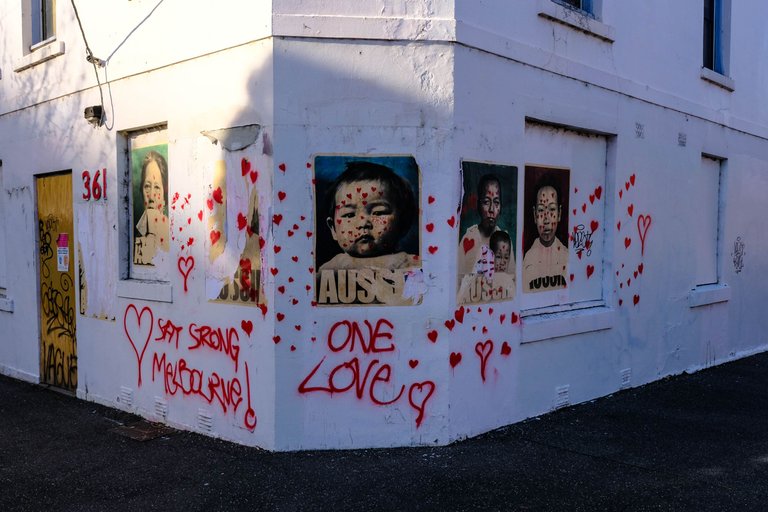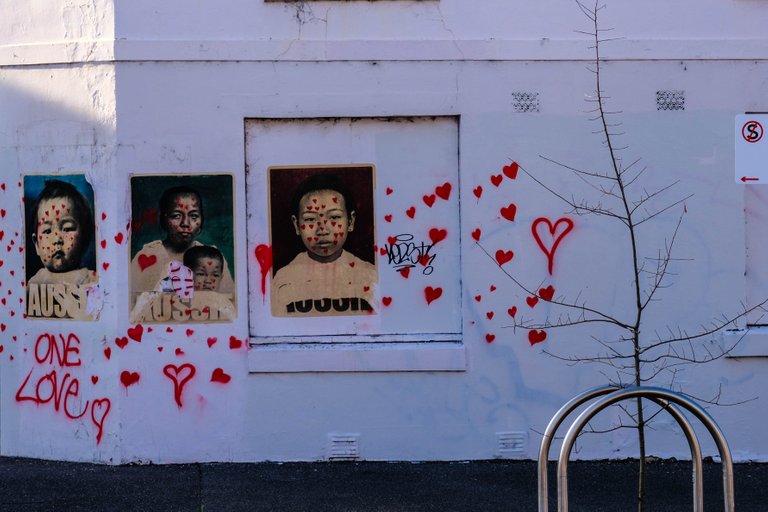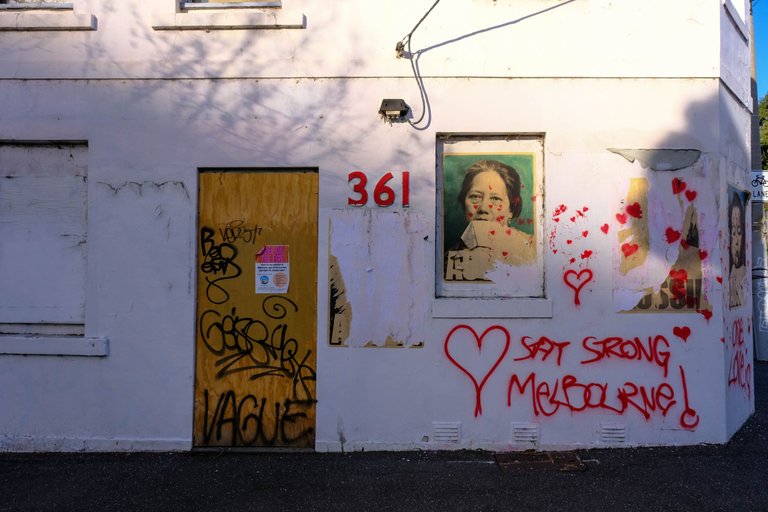
These Aussie posters are pretty famous in Australia - You see them on the walls of building in the inner cities, they are the work of street Artist Peter Drew. I'm going to steal a couple of FAQs from his website to explain a little more.
Who are the people in the Aussie posters?
They are people who lived in Australia and were made to apply for exemptions to the dictation test which was a function of the White Australia policy. The exemption allowed them to leave Australia and return without being racially excluded. All of the photographs are from the Australian National Archive.
What do the Aussie posters mean?
Ultimately the posters are an opportunity for people on the street to identify with the people in the posters. When we gaze upon the other and feel their gaze returned, we recognise oneself within the other and, for a moment, all boundaries dissolve. That’s my aim.
However, I’m happy for people to read the posters as they wish. On the one hand they speak to the aspirational ideal of the nation state as equaliser and unifier. On the other hand they expose the legacy racial prejudice which compromises that ideal. But really such academic notions are secondary, and often offer little more than a means of avoiding feeling. Primarily I hope the posters foster human connection through the image itself.

Now if you aren't Australian you might wonder what the White Australia Policy is - again let me steal from the internet - this time the National Museum:
When Australia federated in 1901, parliamentarians felt it necessary to create a national law for immigration.
The Immigration Restriction Bill (commonly known as the white Australia policy) was one of the first Bills introduced to the new parliament and proposed a twofold approach to restricting non-white population growth. The Act came into law on 23 December 1901.
The Act gave immigration officers the power to make any non-European migrant sit a 50-word dictation test. This was initially given in any European language, and after 1905 in any prescribed language.
As the language chosen for the dictation test was at the discretion of the immigration officer, it was easy to ensure failure for migrants deemed undesirable, either because of their country of origin, possible criminal record, medical history, or if considered morally unfit.
Extremely small numbers of non-white migrants were ever allowed to pass. The test was administered 1359 times prior to 1909, with only 52 people granted entry to Australia. After 1909 not a single migrant made to sit the test passed.
Small numbers of migrants were granted certificates of exemption from the test but often exempted people became separated from their friends and family members who did not pass and were deported.
The White Australia policy had an immediate impact, rapidly changing demographics. By 1947 only 2.7% of the whole population was born outside of Australia, Ireland or the United Kingdom.
After WWII the policy was not enforced and by the 60's it was gone.
Now we are a nation of Immigrants - about 8 million or 29.8% of Australians are born overseas. England is still number one with 900,000 but then it's all nations that wouldn't have got in before - India - around 700,000, China 650,000
As for myself - I'm born overseas (In New Zealand so that barely counts) but my heritage is Southern Italian, and my grandfather moved to Australia in the 1930's - As you may have worked out this makes him one of the 2.7%. In fact there were less than 8,000 Italians in Australia then. Now there are 200,000 and plenty more - around 900,000 who are born in Australia but have Italian parents.

And finally I should mention that the Aussie posters are just that Posters - they are normally not covered in love hearts - this seems to be a message to Melbourne (where I live) to stay strong through our latest lockdown (just under two weeks at this stage and looks likely to be lifted on Tuesday and the reason I was out for a short stroll on a Sunday morning).
And this is what I love about Street art the way it not only interacts with the built environment, but also with society - two different social messages going on here, and how the artists interact with each other.
All countries have a whole bunch of ugly things in their history that they would like to forget and it is good to draw attention to this in any way.
!LUV
@harveyword, you've been given LUV from @seckorama.
Check the LUV in your H-E wallet. (1/1)
Yeah we should not forget - we should not condemn but instead learn from them
Interesting works... All countries had (still have) rather abject laws to limit the immigration that didn't suit them. It's good to remember that we're all immigrants in one way or another.
Thanks for sharing these pics on The StreetArt Community.